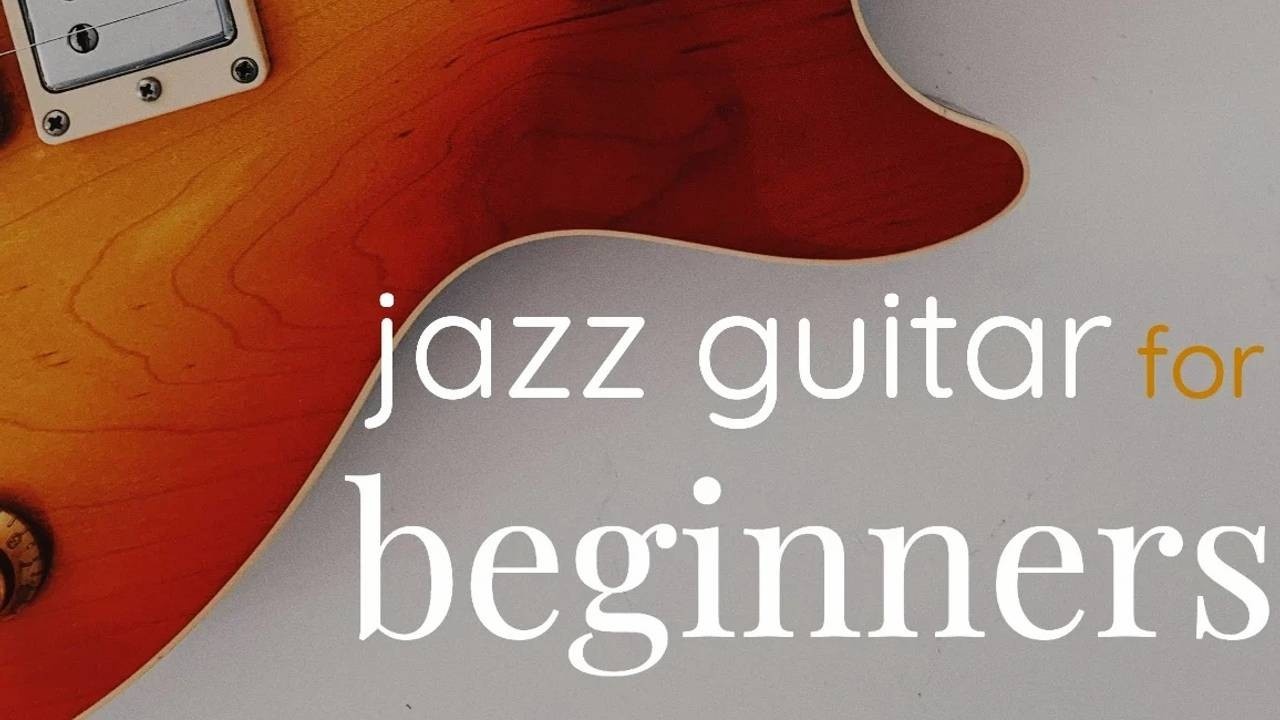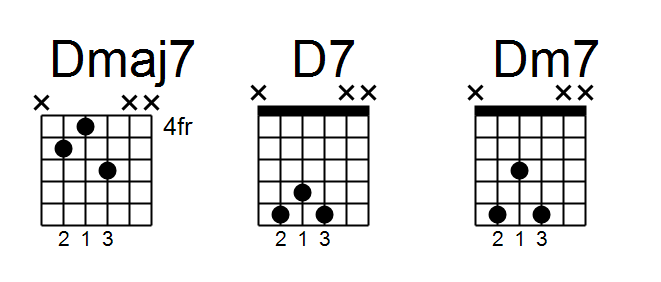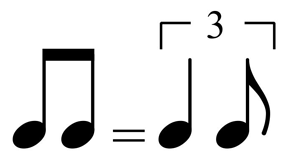
Jazz Guitar for Beginners
May 31, 2021 Getting started with jazz guitar often seems intimidating to many players. Today, I'm here to tell you that with strong fundamentals and consistent, diligent practice, you can also play jazz guitar.
Getting started with jazz guitar often seems intimidating to many players. Today, I'm here to tell you that with strong fundamentals and consistent, diligent practice, you can also play jazz guitar.
I won't kid you. It's a lifelong endeavor with lots of obstacles and challenges, but the results are worth the work.
With every milestone, you have new artistic possibilities to explore and newer challenges to overcome. It never ends :)
Here are your beginner steps to playing jazz guitar:
- Guitar basics
- Articulation
- Rhythm
- Basic Modes
- Triads & Basic Shell Voicings
- Tunes
Guitar Basics
Teaching jazz guitar to a beginner is kind of unusual. You would be hard-pressed to find someone who started out with jazz from the very beginning.
I can, however, give you a few little licks and chord shapes to get you started.
Let's start with 3 chord shapes that will help cover a lot of ground early on.

Move these shapes around and find the root notes along the fretboard. These are known as shell voicings because they only make use of the "shell" of the chord.
That Dm7 can also be used to play Dm7b5 since the 5 here is omitted. ;)
Next, we'll give you 3 simple licks you can use to get you started over II-V-I progressions. All of these make use of highlighting important chord tones on strong beats.
II-V-I Lick #1:

This is a descending minor triad leading stepwise into the 3rd of the G7 and finally arpeggiating up the chord and down to the 5th of C (G).
II-V-I Lick #2:

Here we have a somewhat inverted version of the first lick. This is an ascending Dm7 arpeggio that - once again - hits the 3rd of the G7 (B) and descends in stepwise fashion to the 3rd of the C (E).
II-V-I Lick #3:

Lastly, we have something slightly different. We're making use of some chromaticism and landing on the 3rd of the G7, then descending from there in a stepwise fashion to the 3rd of C (E).
We won't go over all of the theory here as it is beyond the scope of this article, but you can find everything you need in our lessons on the basics of harmony and improv:
Jazz tends to make use of some pretty sophisticated language so it's important to learn to crawl before you can walk, so to speak. I'm assuming you have already learned a few chords and basics, but let's make sure we've got some fundamentals down.
- Posture - Make sure you are sitting upright if you are playing sitting down to avoid back pain.
- Picking - There are many different kinds of picking techniques out there. Make sure that whatever approach you decide to take, you don't strain. Look into alternate picking and economy picking.
- Fretting - You'll want to hold the neck like you're holding a tennis ball. Use your fingertips to fret to make sure you get the best out of the note.
Articulation
It's very important to pay attention to articulation in jazz. Knowing which notes to play staccato (short or abrupt) and which to hold out, is as important as being able to swing your 8th notes.
 An instructor at my old college always used to say, "pay attention to the ends of your notes."
An instructor at my old college always used to say, "pay attention to the ends of your notes."
Listen to your favorite players and pay attention to how they articulate their phrases. Being able to do this can really add a whole other dimension of contouring to phrases of your own.
A great example of this is, of course, Miles Davis. Check out some of his concerts and pay particular attention to this. I think you'll really get a lot out of it.
Rhythm
Rhythm in what we know as straight-ahead jazz makes use of swung 8th notes a good majority of the time.
This concept is somewhat abstract and can be a bit tricky to explain accurately. The best way to think about it is as if two 8th notes are played like an 8th note triplet where the two beats of the triplet are tied.

This is not exactly right, but it's probably the closest explanation to it. Much like with articulation, the best way to understand this concept is to listen to the same great players I mentioned previously.
Of course, I'm going to send you back to the same concerts! Check out how Tony Williams phrases on drums and listen to his swing feel to get a good idea.
A great way to practice this is to simply take one note on the guitar and try to emulate the swing feel he uses in these performances.
Basic Modes
As mentioned previously, going into all of the theory is beyond the scope of this lesson, but you can access some of the information you'll need with our Gentle Intro to Scale Theory page.
With that said, however, I'd like to briefly mention three modes of the major scale that will begin to lay the groundwork for you. Here they are as they would fall in a II-V-I in C major.
Ionian (or Major)

Dorian

Mixolydian

Beginners often mistakenly learn these modes and think they've figured out improvisation. The truth is, however, that improv is more about language than it is about technical information like scales or arpeggios.
That's why it's important to listen. Listen to your favorite players and maybe even begin trying to transcribe what they're doing and play along with them.
These scales simply help to "define the sandbox," which just so happens to be our first pillar of improvisation.
Triads & Basic Shell Voicings
With these modes under your belt, you will also want to learn to play the chords related to them.
Before you get to that, though, you will definitely want to get all of your triads down in all their inversions on all sets of strings.
Many beginners learn their first "cowboy" chords and forget to really explore learning all of the triads all over the neck. This is a huge mistake for a number of reasons. Triads are one of the major secrets to unlocking exotic sounds in music when you learn how to superimpose them over other sounds.
Here are your 4 basic triads and their inversions on the top 3 strings. I strongly encourage you to move these around to other sets of strings. Learn how each shape looks in different places and know which note is which chord degree in every shape.

...and in the case of augmented triads, they are symmetrical. This means that the shapes for the inversions are the same simply playing from the next chord tone.
C Augmented

Tunes
Once you feel you've got a handle on some of the foundational material, I would encourage you to begin playing on some simple tunes right away.
Learning tunes is one of the greatest teachers as each tune presents its own challenges where you will need to come up with different solutions.
Here are a few to get you started:
- So What
- Autumn Leaves
- Blue Bossa
- Mr. PC
Don't worry about playing anything fast. Right now, just make sure you are doing your best to hit those changes and really make music out of what you've learned here.
Conclusion
Remember, this is not a competition. The key here is to practice consistently and repeatedly. I always say this and will not tire of saying it. A little bit each day is better than cramming one day at the end of the week. You want to reinforce those neural pathways.
Always stretch and make sure you are nice and warmed up to avoid injuries.
Lastly, above all else, make sure you are having fun. Some things will be less fun than others, but just remember that it's all part of the process, and you have to love the process.











